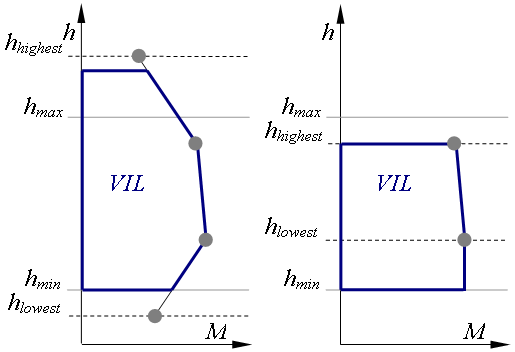BALTRAD
1. Algorithm name
Quality-based vertically integrated liquid water (VIL) product generation – Product2D: VIL
2. Basic description
a) Physical basis of the algorithm
The algorithm generates vertically integrated liquid water (VIL) 2-D product from radar reflectivity volume with quality information using product2D_PPI algorithm.
b) Amount of validation performed so far
Not performed yet.
c) References (names and contact information of all developers during the evolutionary history, scientific papers)
IMGW, Department of Ground Based Remote Sensing.
3. ODIM metadata requirements for I/O
Input data: VOL
- General “what”: source(NOD).
- For particular SCANs:
- Dataset-specific “where” for data and QI: nbins, nrays.
- Data-specific “what” for data: gain, offset, nodata, undetect.
- Data-specific “what” for QI: gain, offset, nodata, undetect.
Output data: Cartesian data
- Top-level “where”: lon, lat, xsize, ysize, xscale, yscale.
- Dataset-specific “what”: product.
- Data-specific “what” for data: gain, offset, nodata, undetect.
- Data-specific “what” for QI: gain, offset, nodata, undetect.
4. Input data
a) What kind of radar data (including the list of previous algorithms and quality flags applied)
object=PVOL:
- quantity=DBZH, otherwise TH,
- quantity=QIND (generated e.g. by QI_TOTAL algorithm).
b) Other data (optional and mandatory, applying “universally” agreed formats, geometry)
Defined projection and domain of Cartesian output.
5. Logical steps, using any of: text, flow charts, graphics, equations (or references to equations), conditional branches in “all possible cases”.
The algorithm generates vertically integrated liquid water (VIL) 2-D products in Cartesian coordinates from radar reflectivity volume and based on the data quality information.
Algorithm parameters
Set of the algorithm parameters:
| Description | Denotation | Unit | Default value |
| Lower height limit for VIL product generation (a.s.l.) | VIL_hMin | km | 1 |
| Upper height limit for VIL product generation (a.s.l.) | VIL_hMax | km | 10 |
| Coefficient c’’ in ‘‘Z-M formula | VIL_ZMc | - | 24000 |
| Coefficient d’’ in ‘‘Z-M formula | VIL_ZMd | - | 1.82 |
Algorithm description
Vertically integrated liquid water (VIL) product represents Cartesian image of the water content residing in a user-defined layer in the atmosphere (in dBA) (Fig. 1). Generally, in the first step a vertical profile of liquid water content M (based on Z-M relationship) is determined by interpolation between all pairs of neighbouring measurements. Then the VIL in a preset range of height (between hmin and hmax) is calculated by integration of the profile. In order to find the vertical profile of M(h), values between two measurements M’ and M” detected at heights h’ and h” respectively, the linear interpolation is applied:

Fig. 1. Scheme of generation of vertically integrated liquid water product (VIL).
Radar reflectivity Z is related to liquid water content M (in cm^3^ m^-3^) according to so called Z-M relationship:
where constants: c 1.82 (as proposed by Selex, 2010).
The VIL (vertically integrated liquid water content) is defined as:
In the VIL algorithm there are considered only measurements (Cartesian pixels on PPIs) between hmin and hmax, and two closest ones (below hmin and above hmax).
The following ranges of integration are considered:
-
If the highest measurement is higher than hmax, then the two measurements above and below hmax are interpolated and values of M below hmax are taken for integration, else the integration is performed up to height of the highest measurement.
-
If the lowest measurement is lower than hmin, then the two measurements above and below hmin are interpolated and values of M above hmin are taken for integration, else the integration is performed with the assumption that the lowest measurement was also at hmin.
Data quality characterization
Quality of the VIL depends on the two factors:
- quality of reflectivity data from which VIL was determined, QIsource,
- how large fraction of investigated heights (between hmin and hmax) was scanned, QIscope,
and the final quality index QI is taken as a product of the both factors:
The value of the first component QIsource is taken as an average quality of all measurements defining VIL. If VIL “nodata”, and if VIL 1.

Fig. 2. Quality characterization for vertically integrated liquid water product in terms of scope.
The second component QIscope is determined based on heights of the lowest and highest scans for considered Cartesian pixel (hlowest and hhighest respectively) in relation to hmin and hmax (Fig. 2):
-
if hhighest < hmin then
QIscope “nodata”.
-
if hhighest ≥ hmin and hlowest <= hmax then QIscope depends on what part of height range between hmin and hmax was scanned:
-
if hlowest > hmax then
QIscope “nodata”.
6. Output
a) Data type using ODIM notation where possible, e.g. DBZH
Input quantity as IMAGE object (in Cartesian coordinates) with:
- “how”: task - “pl.imgw.product2d.vil”,
- “how”: task_args
- parameters inherited from PPI algorithm (interpolation method and selected quality field name),
- parameters of VIL algorithm,
b) Quality index (QI) field
Quality index field QIND as IMAGE object with:
- “how”: task - “pl.imgw.product2d.vil”,
- “how”: task_args - parameters inherited from PPI algorithm (interpolation method and selected quality field name).
7. Outline of a test concept exemplifying the algorithm, as a suggestion for checking that an implementation has been successful.
TBD